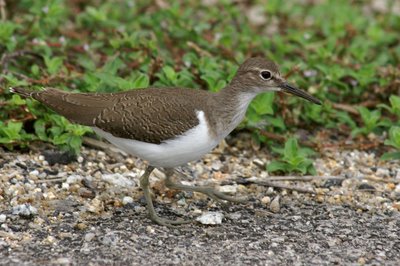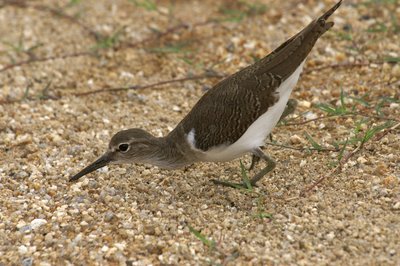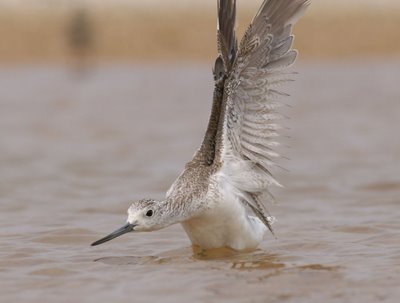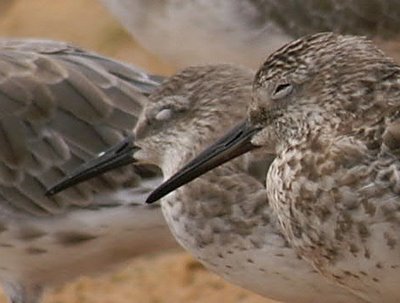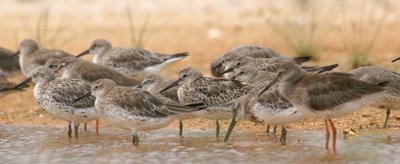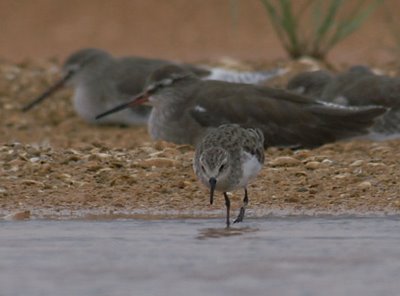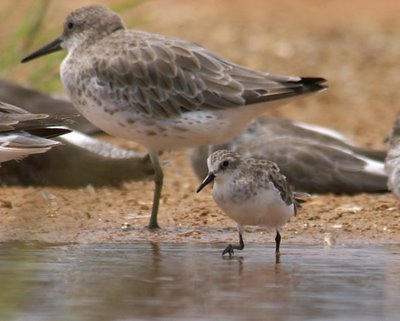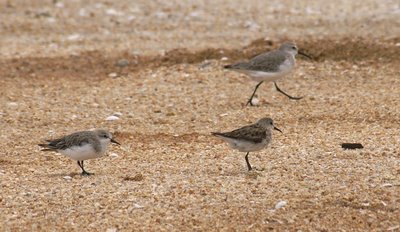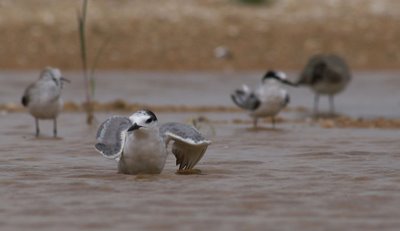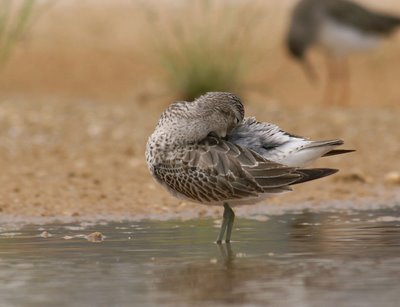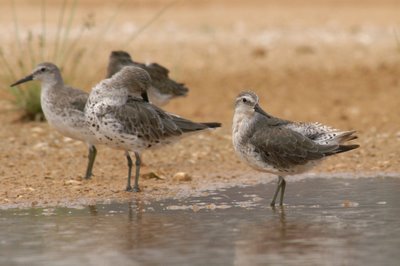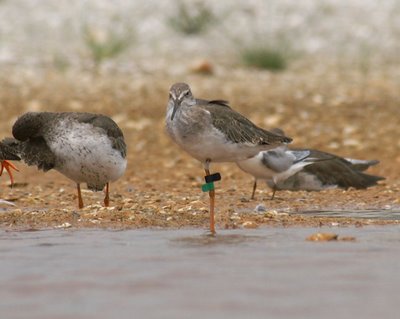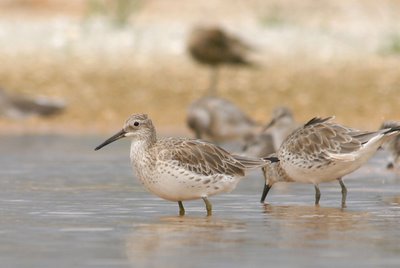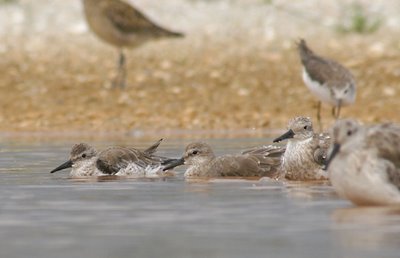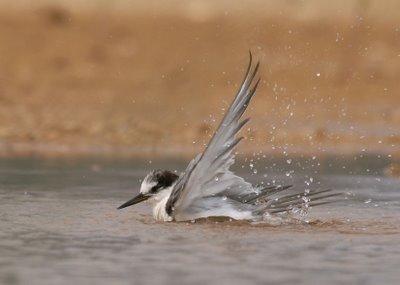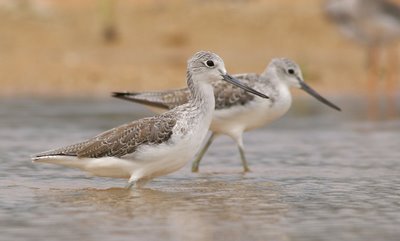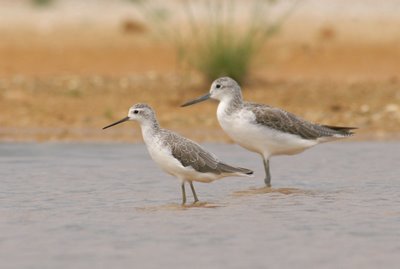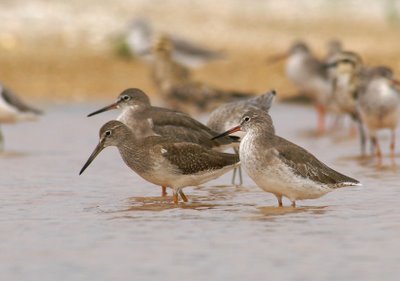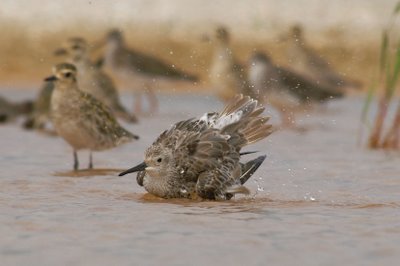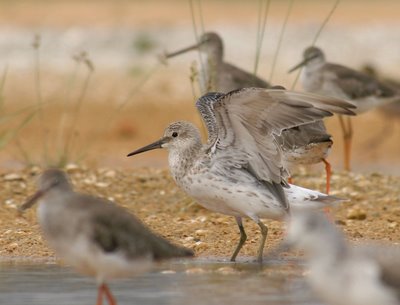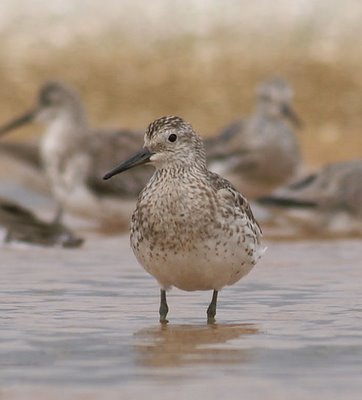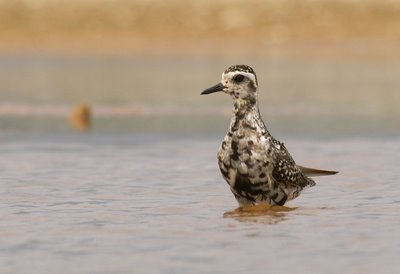Today started out quite unpromisingly and ended up as one of the best and most exciting day's birding I've had in years!
A 2.8 metre spring tide was due to peak around midday, but the haze was so bad at first that the sun appeared as a dim orange blob at around 10am. When I first arrived the tide was well out, so I spent some time scoping the birds on the mudflats.
The first surprise was two Kentish Plovers feeding not too far from me. This is quite a rare bird here - I had only recorded them once before at this site. I picked out a stint moulting from juvenile to 1st winter that showed characteristics of Little Stint, but it didn't hang around long enough for me to get thorough notes.
The construction workers seemed to have stopped using the dirt track behind 'my' pool, which meant that there was a good chance that the waders would try to roost there. This meant reconstructing the hide yet again (I had moved it to another area at the end of my last visit)- hauling heavy bits of wood around is hot work at the best of times!
Eventually I got into my 'coffin' at about 10.30am, and was treated to an exhilirating display, as several hundred birds roosted within a few 10s of metres from me. Four hours and about 700 photographs later I emerged! There are so many pictures that I think I'll upload them in stages. Here's the first crop.
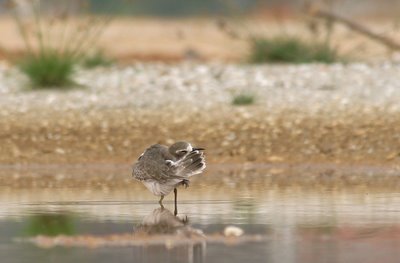 This Greater Sand Plover was one of the first birds to return after I had got into the hide.
This Greater Sand Plover was one of the first birds to return after I had got into the hide. Not a particularly sharp photo, but it shows the difference in size and proprtions of Greenshank (front) and Marsh Sandpiper nicely.
Not a particularly sharp photo, but it shows the difference in size and proprtions of Greenshank (front) and Marsh Sandpiper nicely.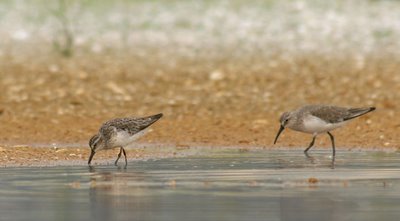 The adult Broad-billed Sandpiper again fed at the back of the pool today. Here it is with a Curlew Sandpiper. Note the shorter legs and also the double supercilium.
The adult Broad-billed Sandpiper again fed at the back of the pool today. Here it is with a Curlew Sandpiper. Note the shorter legs and also the double supercilium.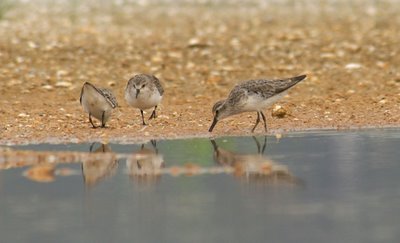 Here it is again with a couple of Red-necked Stints. It isn't a great deal bigger than them.
Here it is again with a couple of Red-necked Stints. It isn't a great deal bigger than them.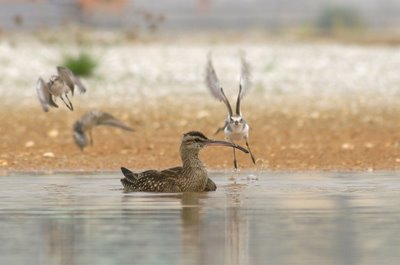 This juvenile Whimbrel was determined to get a bath! Unfortunately something disturbed all the birds, and it had to abandon its ablutions...
This juvenile Whimbrel was determined to get a bath! Unfortunately something disturbed all the birds, and it had to abandon its ablutions...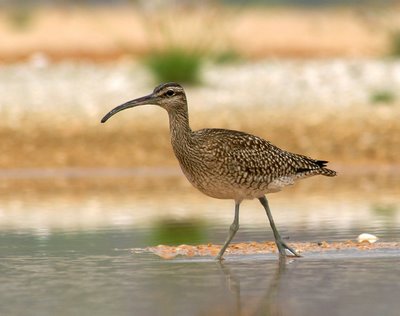 ...but almost immediately it came back again, and walked into the deeper water right in front of me.
...but almost immediately it came back again, and walked into the deeper water right in front of me.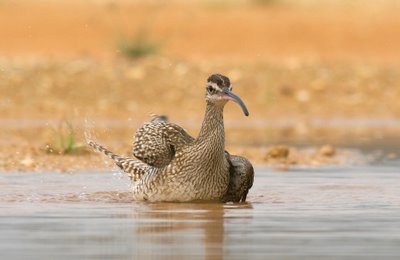 So it got to finish off its bath in peace!
So it got to finish off its bath in peace!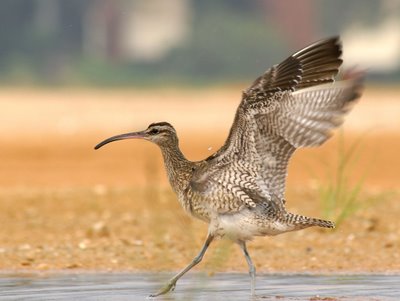 Drying off with a quick flap of the wings!
Drying off with a quick flap of the wings!
